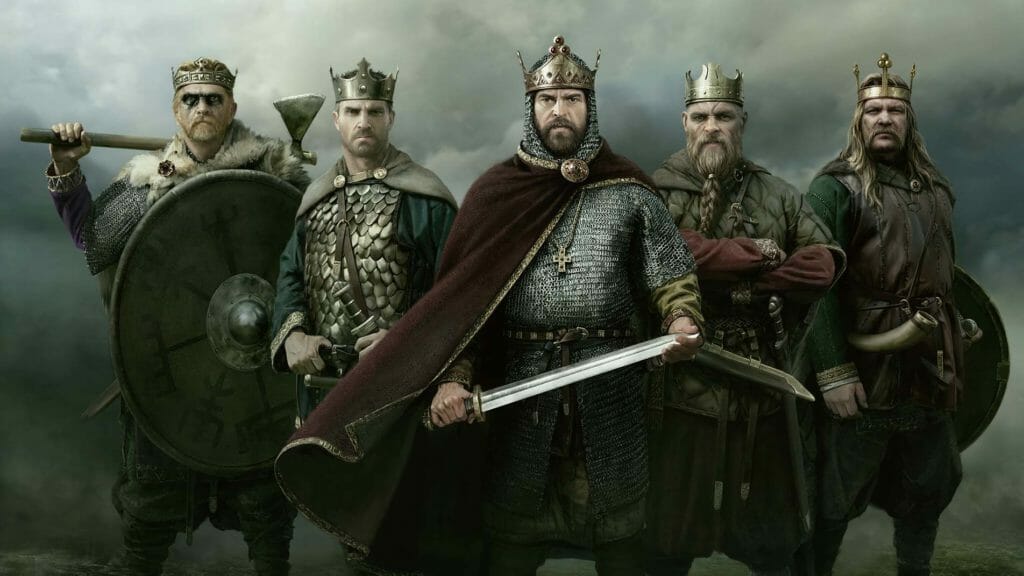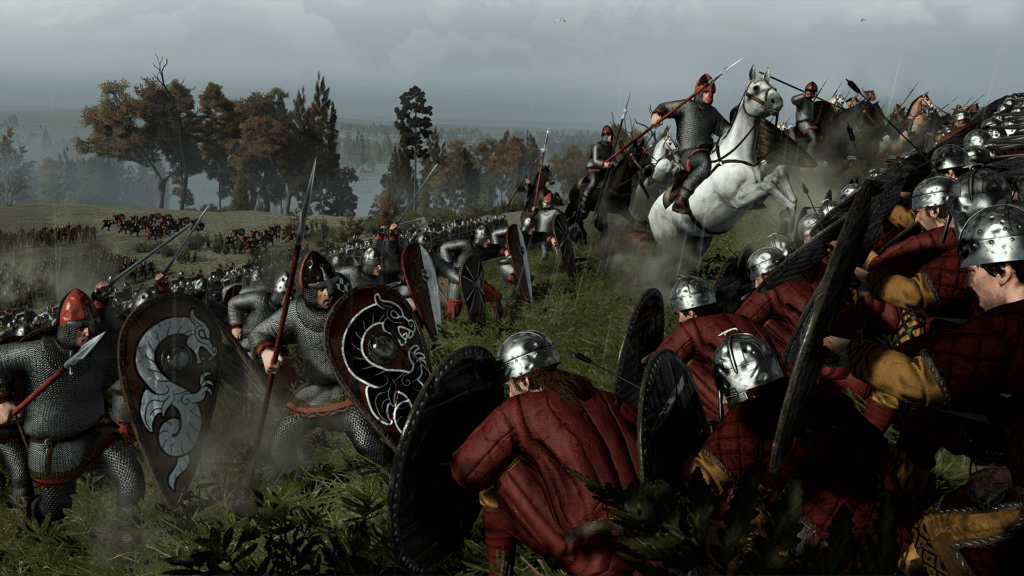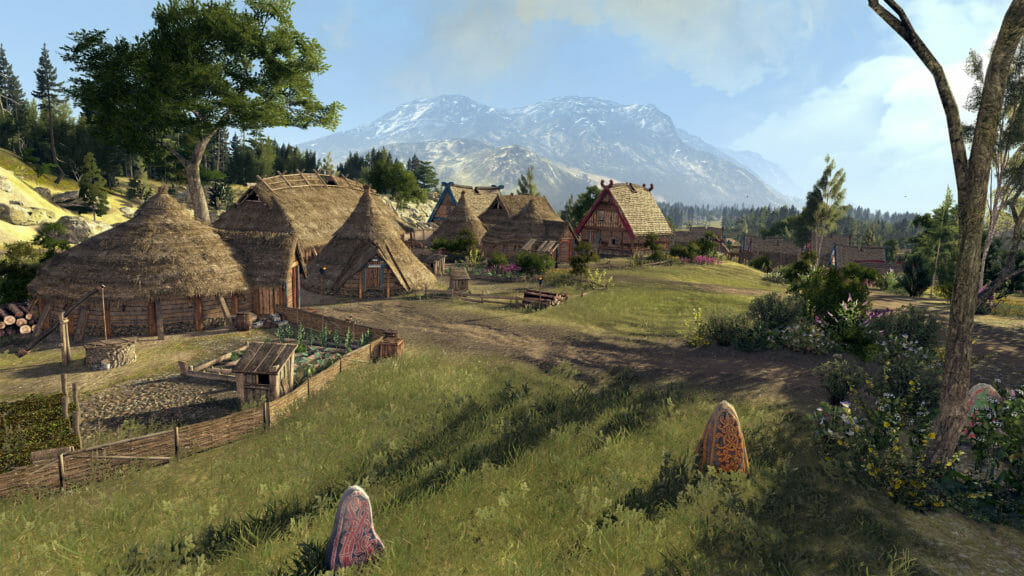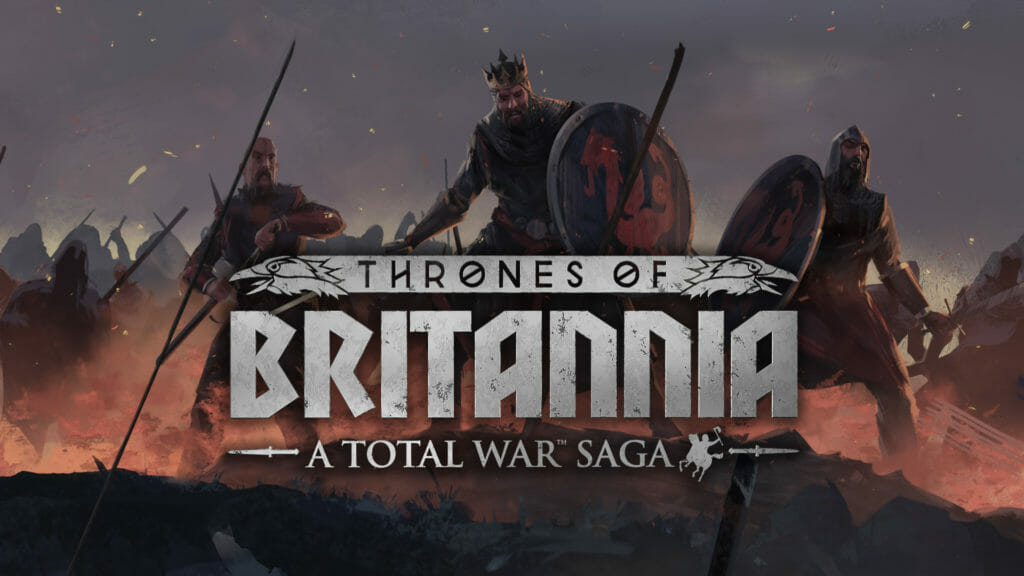Thrones of Britannia’s Narrative: Story in a sandbox
Hello and welcome to the third Thrones of Britannia blog, and it’s time to talk about story. Or more accurately, how we’re working story into the sandbox nature of the campaign, and how we’re illustrating the adventures and predicaments you’ll face. If you’d prefer to see the man himself, check out our Narrative Spotlight video at the end of the blog, but without further ado – here’s Game Director Jack Lusted to tell you more.
What Happens Next?
In previous blogs I’ve talked about why we’ve gone for the starting date we have, of this great moment in history where the big question is who will rise to the challenge and dominate the isles. Of course, in history there’s a known answer, but history only played out the way it did because of the choices people made. What happens if different choices are made? That’s the philosophy behind how we’re incorporating story events into Thrones.
The key is that there is no single set path that events can take. Nearly all of the story events provide you with choices which can take you down different paths.
The best way to illustrate this is with an example, and a great one is the Gaelic kingdom of Circenn. In history the kingship of Alba swapped between the two branches of the Alpinid dynasty located in Circenn and Fortriu. However, when the king of Circenn died in 878, the kingship didn’t transfer to his northern brethren. Documentation isn’t clear, but it seems either an outsider called Giric ruled on his own, or with Eochaid who was the son of the king of Start Clut and had a claim to the kingship through his mother, who was a daughter of Cinaed mac Ailpin, founder of the Alpinid dynasty.
Aed is still king at the start of our game, so his death in 878 AD isn’t guaranteed, and the confusion and political implications of his death or an attempt on his life allows for some juicy early-game events.
So first off, his death is not guaranteed to happen, though it is highly likely. His death –or an attempt on his life – can take place within quite a wide range of time to allow for divergence from history. Upon his death or, again, an attempt on his life, there are multiple potential outcomes.
- Athfochla, which has Giric as its king, can be implicated in the attempt
- Athfochla and Strat Clut can be implicated in the attempt
- The player is given the option to get revenge on the conspirators or take an influence hit
- If the player chooses war, the other branch of the family may or may not join them in seeking revenge.
All of these variables allow for a wide range of outcomes from what was a single event in history, and one that can have a big impact on the campaign. It can decide who becomes the most powerful Scottish faction early on.
And this isn’t just for the player; this event will happen for the AI as well, and this is the approach we’ve gone for across the game. We’re giving players events with impactful choices that can change the direction of the campaign, lead you down different paths, and the same happens for AI-controlled factions.
Many of the early events for factions are based on what happened in history but of course, as we’re allowing for differing outcomes, there are many events we’ve written that are inspired by what might have been.
Replayability
This means each campaign will feel different, as each of the 10 playable factions will experience events which can have different outcomes. And as the events of factions around the players can vary from campaign to campaign, this means the right answer to an event may differ as well. For example, in one campaign as Mierce, you might attack Wales and find it divided; in another, the sons of Rhodri could unite against you, maybe turning your attention to the East instead.
10 factions all with their own choices, and choices varying from campaign to campaign, adds up to a lot of different ways a campaign can play out.
We’ve also got Viking raids that can occur, off-map factions that arrive in raiding forces to harass the coastlines of Britain and Ireland. The Great Viking Army might have settled, but many others continued to look to the isles for plunder and glory. The size of these raids, and when they occur, will also vary from campaign to campaign. Characters also have ways to help build stories around them, but that’s a subject for another time.
Bringing the story to life
To help tell the story of their campaign, each faction has a unique movie that sets the scene for the start date of 878 AD, and the subsequent events that happen often have unique event movies of their own. These are short, 6-second movies, with the intros being almost a minute long.
We’ve executed these in the new 2D art style we’ve developed for Thrones, based upon artefacts from the era such as runestones, church carvings, illuminated manuscripts and metalwork. In particular, the Hylestad stave church carvings of the story of Sigurd were a particular inspiration for our unit cards, movies and event pictures, with their long, angular faces and unmistakeable Scandinavian style. We’ve accented the artwork with metallic textures and vivid coloured lighting, to give such images and scenes a sense of vibrancy, to really bring them to life.
This unique style works great for our movies. It helps illustrate the story of your campaign in an authentic fashion, harking back to how the people of the era recorded their stories.
I hope this blog has helped illustrate the narrative we’re building into Thrones, and how making it fit the sandbox nature of Total War is a key part of what we’re aiming for. Next time, I’ll be talking about characters and their traits, followers, and how no-one is immortal…



